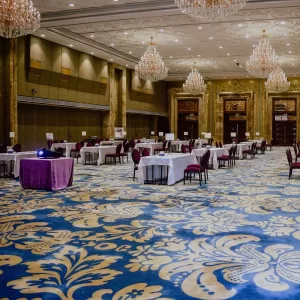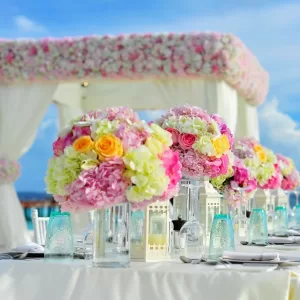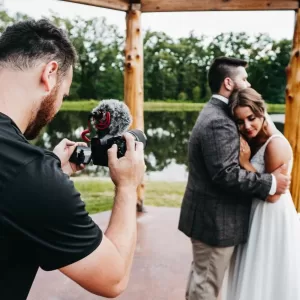
Weddings in Persia reflect the glimpses of ancient Zoroastrian customs. They are generally celebrated in a lavish manner, accompanying various pre-wedding and post-wedding traditions. In Persia, wedding preparations are started very earlier because both the sides have to do a lot more than a mediocre wedding ceremony. All family members, relatives, and friends take part actively in each event, making all the events glorious and colorful.
Khastegari
Once the boy’s side or even the boy himself chooses a girl, a formal ‘khastegari’ process takes its way. This ceremony is basically a visit to the girl’s place by the representatives of the boy’s family. In the very first visit, both the sides want to know each other. Although it’s not a formal kind of proposal but still very useful to step forward to the next step. Once both the sides decided to pursue a relationship, the second Khastegari takes place.
Follow-up of first Khastegari
In the second Khastegari, a formal proposal is made from the boy’s family. Both the sides talk about the merits of both the boy and girl. First, girl’s family talk about nature, education and domestic skills of the girl. Whereas, boy’s family particularly talk about the education, financial status and means of earning. The elders from girl’s side usually ask if he is capable of providing his own accommodation and a financial support to the bride. At the same time, a girl comes with tea, pastries, and other food items and here, both the boy and girl meet each other in private and talk about future life. In modern families, khastegari process is completed in just a single sitting as the couple to already know each other
Bale Boroun
Bale Boroun is conducted further to announce the union of both the bride and groom publically. At this point, both the families are contended on the union and discuss any conditions regarding the marriage. The groom’s parents generally bring an engagement ring as a gift for their daughter-in-law. As per Zoroastrian custom, this ceremony compels the bride to accept the proposal.
Majless-e-Namzadi (Engagement ceremony)
Here comes engagement day! This auspicious occasion is organized by the bride’s family. Both the sides evaluate ‘Mehriye’ – the gift of love along with the wedding date. Rings are exchanged and this itself an announcement of commencing wedding preparations.
Guests fill their mouths with Bamieh (dougnet balls) to express their joy at this lovely moment. This practice is called ‘Shirini Khoron’. Some other stuff like chocolates, nuts, cookies and tea are also served to make this event more festive. A reception or a party is observed at the end of this session.
Tabag Baran
Tabag Baran is not practiced in modern Persian weddings but still its significantly followed in rural regions. Basically, the groom’s family visit bride’s home along with some gifts, just a few days before the marriage. Men from groom’s side carry big, flat jars termed ‘Tabag’, holding those gifts. It’s not a crowded event and ended very soon.
The wedding day
Sofreye Aghd (Wedding Spread)
Persian weddings are undone without Sofreye Aghd. Generally, a floor is decorated with various sorts of food including:
• The Seven Herbs, Poppy seeds, Angelica, rice, Salt, black tea leaves, Nigella seeds and Frankincense.
• The Seven Pastries: Baklava, Noghl, Persian marzipan, saffron almond brittle, almond cookies, rice cookies, chickpea cookies.
• “Naan-o Paneer-o Sabzi”: This means bread, feta cheese, and green veggies, signifying the fundamental food needed to aid life.
• Two candelabras and Mirror of Fate. To notices the very first glimpse of his bride on the mirror once she sits next to him.
• The Blessed Bread: A bread that is baked specially and embellished with the art of calligraphy.
• The Heavenly Fruits: grapes, pomegranates and apples.
• Symbols of Fertility: Decorated almonds, eggs, hazelnut, and walnuts.
• Shakh-e-Nabat: A bowl created with rock candy.
• Persian Rose: A cup full of rose-water which is extracted from the Mohammadan flower named Gol-e Mohammadi to perfume the air.
• Esphand: The frankincense and esphand are placed to protect from evil eyes.
• Honey: Once the couple is married, both of them dip a single finger in the honey and feed to each other.
• The Sacred Text: The Quran, Avesta, Torah or Bible is placed on the spread in front of the couple.
• Coins: A bowl filled with gold or silver coins symbolizing wealth and prosperity.
• Prayer Rug: Often called (Jaa-ye Namaaz) or a Persian Termeh, a rosary (Tasbih) and a clay cube with certain prayers engraved on it (Mohr) are placed on the spread.
Sitting in a Sofreh, a shawl or scarf is placed over the bride and groom’s head by a few bridesmaids. Two sugar cones are grounded gently above the bride and groom’s head and this is done by a happily married woman. The cone drops are fall on the shawl and not on their heads. This fantastic ritual is practiced to shower them in sweetness throughout the event. Another ritual is making some stitches on the shawl that is wearing by the couple with seven different colored threads. It is believed that by doing this, the tongue of the mother-in-law is sewn so that she will not say anything rude to the bride in future.
Aghd
In Aghd, the marriage contract is signed by both the bride and groom. They have to accept and signature three times that they agree to enter into the relationship. After that, Mehriye, the dowry is given by the groom. In religious families, the Aghd generally involves some verses from the Holy Quran, the narration of Prophet Muhammad’s Hadith regarding the significance of marriage. Modern ceremonies may recite romantic poems from Hafez, Saadi or Rumi.
The wedding rings are exchanged here and both the bride and groom feed each other with a honey-dipped finger. The families begin clapping, singing and congratulating on this joyous event. Later on, both of them are given gold coins, cash, and jewelry as a gift.
Jashn-e-Aroosi (Wedding reception)
This is the last event of Persian weddings. It lasts from 3 to 7 days. Grand supper is arranged and both the families celebrate it in a great manner. Bride also receives various gifts from the guests.
So, this is all about how weddings are celebrated in Persia. However, the celebrations last long unofficially and bride and groom are congratulated time to time. If we make a comparison of Persian wedding traditions with Jordanian wedding rituals or the other Arab country’s rituals, a huge difference can be seen in their wedding cultures because Persian weddings are more towards festivity and of course, lasting celebrations.
Sources :
https://en.wikipedia.org/wiki/Persian_marriage
http://www.iranchamber.com/culture/articles/iranian_marriage_ceremony.php
http://www.pbs.org/independentlens/arusipersianwedding/persianweddings.html
















